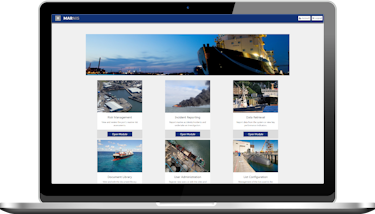MARNIS is suitable for all port authorities from leisure harbours to busy commercial ports.
Although it was originally developed to meet the needs of major port operators around Europe, it is now customisable to meet the specific port or country needs.
The prototype system was developed in consultation with a number of harbour authorities and port managers as part of an European Interreg research project, which brought together 50 partners to develop maritime navigation and information services on a Pan-European basis.
Using industry best practice we developed the port management toolkit together with partners such as the Port of Rotterdam, the European Harbour Masters Association and the European Pilots Association. The prototype software was issued in 2008.
Since then we have continued to upgrade and customise the MARNIS Port Assessment Toolkit for ports around the world.
The Toolkit can be tailored to your requirements. Database functions, geo-referencing of accidents/incidents, client specific risk control, cause and hazard lists and other reports can all be tailored to meet specific port or country needs.



